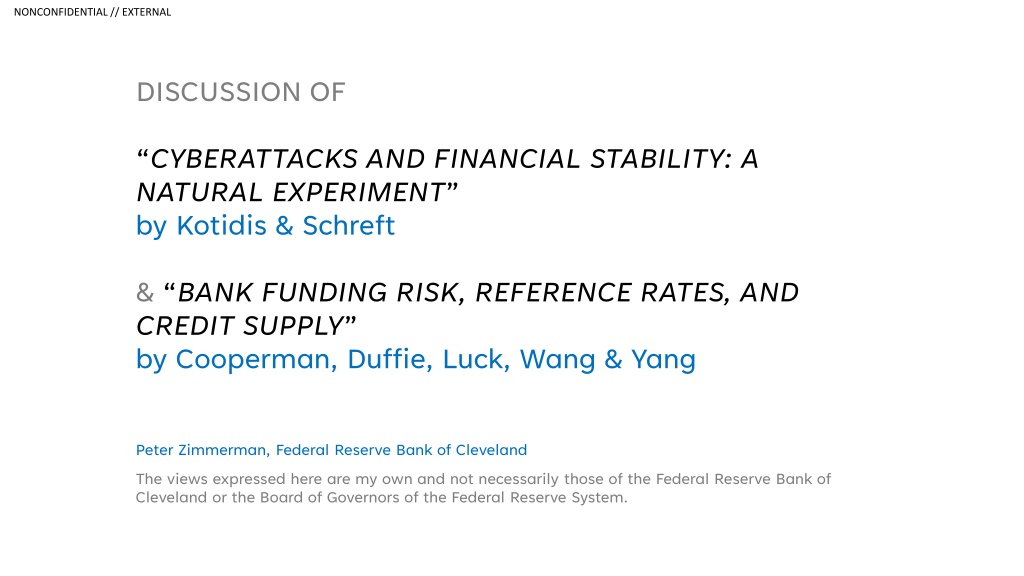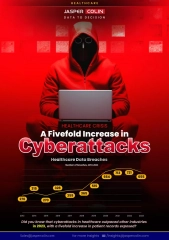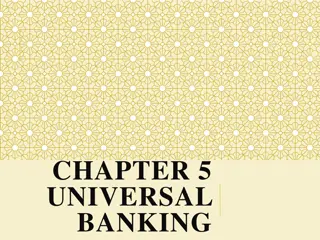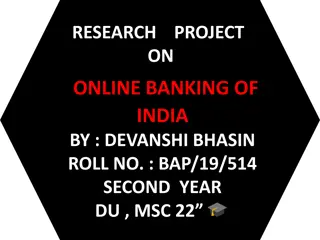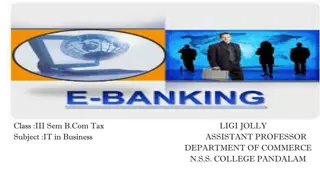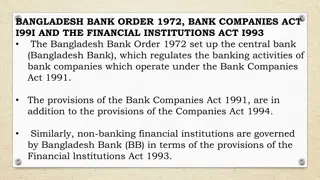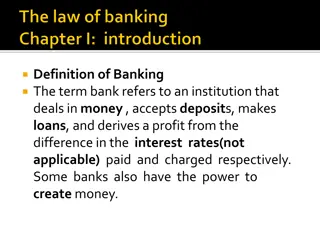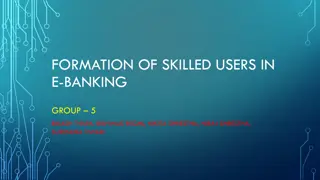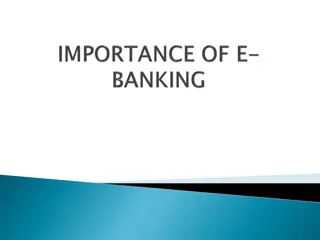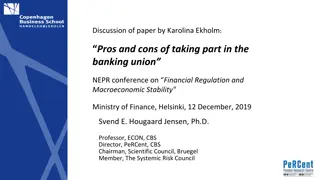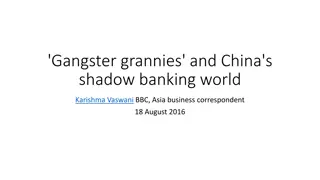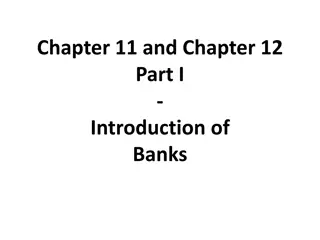Analysis of Cyberattacks and Financial Stability in Banking Sector
Study examines the impact of a cyberattack on bank liquidity via a natural experiment, highlighting disruptions in payment systems and the reliance on contingency plans. Authors investigate user behavior differences pre- and post-attack and assess the validity of interbank loan identification methods. Additionally, implications of transitioning from LIBOR to risk-free rates for credit extension are discussed.
Uploaded on Oct 02, 2024 | 0 Views
Download Presentation

Please find below an Image/Link to download the presentation.
The content on the website is provided AS IS for your information and personal use only. It may not be sold, licensed, or shared on other websites without obtaining consent from the author. Download presentation by click this link. If you encounter any issues during the download, it is possible that the publisher has removed the file from their server.
E N D
Presentation Transcript
NONCONFIDENTIAL // EXTERNAL DISCUSSION OF CYBERATTACKS AND FINANCIAL STABILITY: A NATURAL EXPERIMENT by Kotidis & Schreft & BANK FUNDING RISK, REFERENCE RATES, AND CREDIT SUPPLY by Cooperman, Duffie, Luck, Wang & Yang Peter Zimmerman, Federal Reserve Bank of Cleveland The views expressed here are my own and not necessarily those of the Federal Reserve Bank of Cleveland or the Board of Governors of the Federal Reserve System.
NONCONFIDENTIAL // EXTERNAL Summary of Kotidis & Schreft Event study examining the effect on bank liquidity of a cyberattack affecting the payment system. Their techniques could be used to examine any kind of operational outage. Banks were unable to access Fedwire and had to rely on contingency plans. Payment flows were disrupted, but bank were able to access liquidity so knock-on impacts were minimal.
NONCONFIDENTIAL // EXTERNAL How cyberattack affects payments Fedwire TSP 3 TSP 1 TSP 2 TSP 2 Bank C Bank D Bank B Bank B Bank A
NONCONFIDENTIAL // EXTERNAL Parallel trends assumption Authors show no significant difference between users and non- users in payments pre-attack. But I still worry users and non-users have different characteristics that could affect their behaviour. For example, if attack coincides with market turmoil, users and non-users might respond to that turmoil differently, confounding the results. Can we use other bank characteristics as controls?
NONCONFIDENTIAL // EXTERNAL Fed funds loan data Identify interbank loans using the Furfine algorithm: 1. On day t, bank A sends bank B a payment X, where X is a round number. 2. On day t+1, bank B sends payment Y to bank A. If ? ? 1 is a plausible interest rate, we say (X,Y) is an overnight loan. 3. Armantier & Copeland (2015) show this method is very unreliable: it misses 23% of actual fed funds txns, and 81% of identified txns are not in fact fed funds txns! Authors check validity of algorithm using FR 2420 (daily bank liability disclosures) and 10K filings of FHLBs. I guess these give aggregates for each party? It seems like it will be hard to reconcile these data.
NONCONFIDENTIAL // EXTERNAL Summary of CDLW&Y When times are bad, banks have two problems: 1. Corporate borrowers draw on pre-committed credit lines [asset side] 2. Funding costs rise [liability side] If lines are linked to a risk-free rate, the two risks are poorly matched. This makes bank shareholders reluctant to offer credit lines ex ante. Transition away from LIBOR to risk-free rates could mean less credit extended.
NONCONFIDENTIAL // EXTERNAL Contracting friction The bank commits to a line L and a spread s(L) ex ante. The borrower then observes market stress and chooses to borrow q L. Simple solution to mismatch problem: make spread contingent on bank s own borrowing costs. That s even better than using LIBOR! No disclosure if use bond price. Why, given L, is the spread fixed? Why can t the bank make the spread contingent on q?
NONCONFIDENTIAL // EXTERNAL Welfare considerations As the authors discuss, the issue is essentially whether the bank or the borrower should take interest rate risk. If bank takes rate risk, it lends less, which is assumed to reduce welfare. (This is the only contribution to welfare considered.) But isn t it possible the firm borrows too much under a risk-free reference rate? It may take on more risky projects than is socially optimal.
NONCONFIDENTIAL // EXTERNAL Both papers are about banks liquidity resilience 1. In K&S, the operational outage is a shock to liquidity. 2. In CDLW&Y, the transition to risk-free reference rates exacerbates liquidity mismatch risk.
NONCONFIDENTIAL // EXTERNAL Ample liquidity mitigates the risks 1. In K&S, there is no significant knock-on effect to payment delays at banks indirectly affected by the cyberattack. 2. In CDLW&Y, transition from LIBOR increases cost of credit lines by 5.6 bps in normal times. If central bank reserves are limited or more expensive, would the liquidity risks associated with cyberattacks and LIBOR transition rise?
